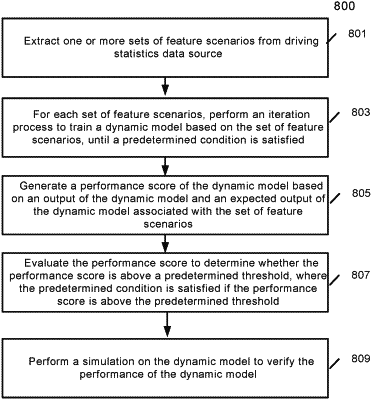| CPC G06N 3/08 (2013.01) [G06N 20/00 (2019.01)] | 14 Claims |

|
1. A computer-implemented method of training dynamic models for autonomous driving vehicles (ADVs), comprising:
extracting, from a training data source, a first set of training data for a first set of feature features, wherein each of the first set of features is a driving command, wherein the extracting of the first set of training data from the training data source includes determining a plurality of equally-spaced value ranges for each driving command, and selecting a value from each of the plurality of equally-spaced value ranges for the driving command;
training a dynamic model based on the first set of training data for the first set of features;
determining a second set of features as a subset of the first set of features based on comparing an actual future state of the dynamic model and an expected future state of the dynamic model in response to testing data for each of the first set of features, each of the second set of features being a feature for which a performance score of the dynamic model is below a predetermined threshold;
for each of the second set of features, iteratively performing the following operations until the performance score of the dynamic model for that feature reaches the predetermined threshold:
extracting, from the training data source, a second set of training data, wherein the extracting of the second set of training data includes determining a plurality of equally-spaced value ranges for the driving command corresponding to the feature, and selecting a value from each of the plurality of equally-spaced value ranges for the driving command; and
retraining the dynamic model using the second set of training data.
|